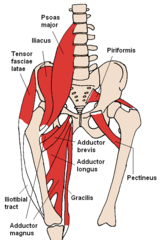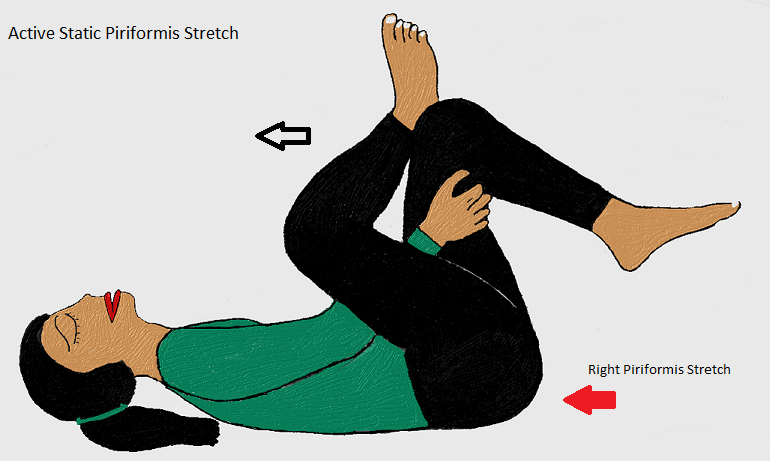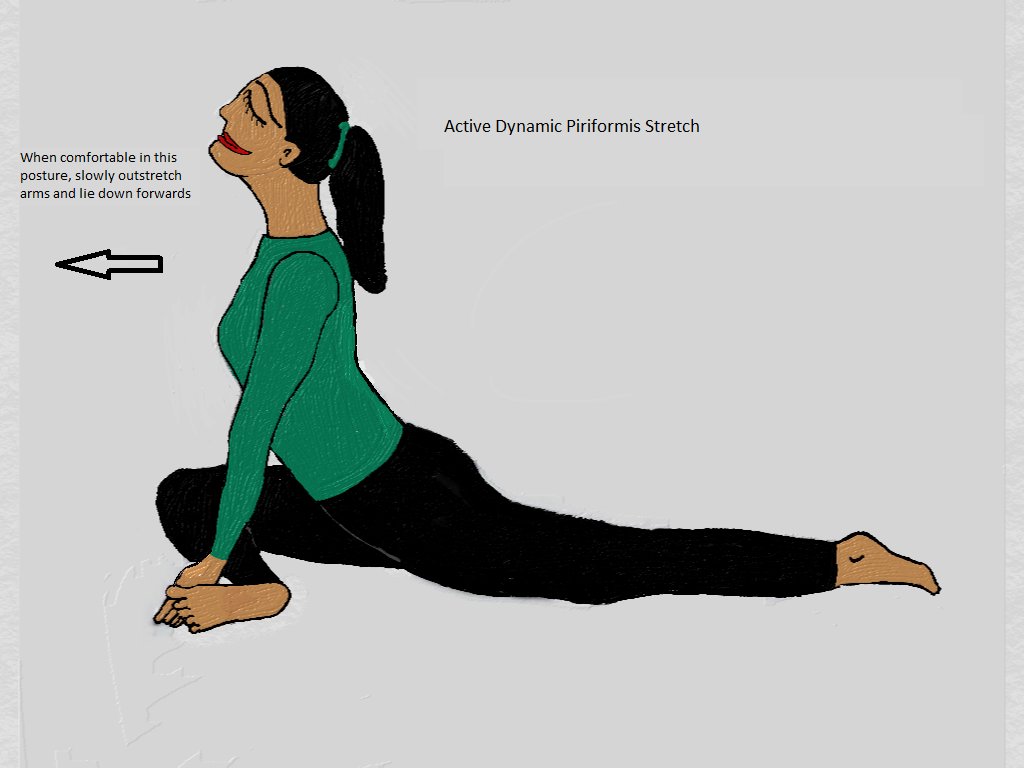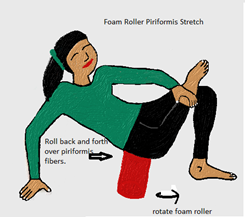|
This week let us consider the piriformis stretch. The piriformis muscle is a small deep muscle which lies in the gluteal region. It originates from the front or anterior portion of the sacrum, the sacro-iliac joint (SI jt.) capsule and the sacro-tuberous ligament and inserts onto the greater trochanter of femur. It functions as a lateral rotator of the hip, flexes and abducts hip and with the hip flexed 60°-90°, it works as a hip medial rotator and extensor and continues to abduct hip. In other words, the position of the hip is important in determining the function of this muscle. Also, the stretch position therefore varies with hip position and appears paradoxical. However, both positions (whether in hip flexion or in neutral hip position) are successful in stretching the muscle. Once you realize this, it enables the hip to open freely and both movements benefit from any one stretching technique, since the underlying muscle we are stretching is the same. This in some way brings shavasana to mind, the goal of the asana being relaxation. One technique used to relax the body is by initially tightening it to utmost, and then to “let go,” (here you are using muscle tightening to experience relaxation). The relaxation achieved by this method is tremendous and experienced in the given moment of “letting go.” With practice, you eventually learn to let go without the need of initial tightening. Enough said, lets delve into the stretches, considering the right side stretch for ease of understanding.
Passive stretch: i) In the supine position, the therapist flexes (less than 60° hip flexion), adducts and internally rotates, the right hip, with the back in neutral and pelvis level on the mat. One hand is placed on the outer side of the right knee and other on the right ASIS or iliac crest. ii) In supine with the left leg in neutral, the therapist flexes the right hip greater than 60°, abducts and externally rotates the right hip, then slowly moves the right lower leg towards the left shoulder to deepen the stretch as the sacrum and greater trochanter of femur move away from each other. Active Static Stretch: i) The reverse pigeon pose stretch or popularly known as figure of 4 stretch: In supine position, bend both the hips (greater than 60°) and knees so that feet rest on the mat. Lift the right foot off the mat to bring knee to chest and simultaneously turn the hip outward so that the right ankle rests on the left thigh (just above the left knee). Now with both the hands, grasp the left thigh and gently bring it toward your chest by lifting the left foot off the mat. When you do this, it is natural for the tailbone and sacrum to lift off the mat as well. Bring the sacrum and tailbone down to the mat, (thus bringing the lumbar spine from flexion to neutral), to deepen the stretch. This way, the sacrum is held stable, while you move the femur to bring about the stretch. Active Dynamic Stretch: i) The pigeon pose or kapotasana: You begin from the plank pose and bring the right foot onto the floor in front of the left hip joint. Bring your foot and toes up while sticking out the ball of right foot and push the outside of foot onto the mat. Bring the right knee to the floor. The hip may be abducted so that the knee is slightly lateral to the hip and slowly scoot the left leg back and rest the top of foot onto the mat, ensuring the left hip is in line with the left foot at all times and the body weight is centered. The forearms here will rest on the mat as you continue slowly scooting the left foot back and elongating the body. When you feel a stretch in the right buttock area, stay there for a while. Deepen the stretch when possible by lowering the trunk to the floor and outstretching the arms in front during exhalation. Stretch with equipment or tools: i) Foam roller stretch: Place the foam roller on the mat and sit on it. Bend both the knees with feet flat in front on the mat. Bring both palms on mat, behind the roller and shift your weight onto the arms. Lift the right foot off the mat and bring it onto the left thigh, right ankle resting just below the left knee. Make a quarter turn to the right side and gently roll the foam roller under the right buttock. You can release different segments of the muscle by rolling further onto right side in small increments and also vary the release by turning the foam roller along the right thigh. Base the body weight you put onto foam roller by the intensity of release experienced.
0 Comments
Your comment will be posted after it is approved.
Leave a Reply. |
Details
AuthorAmi Gandhi is a licensed physical therapist in the state of California. She is the owner of StableMovement Physical Therapy, a small boutique practice in San Jose that offers patient centered, one-on-one, hands-on physical therapy. Archives
March 2018
Categories |



